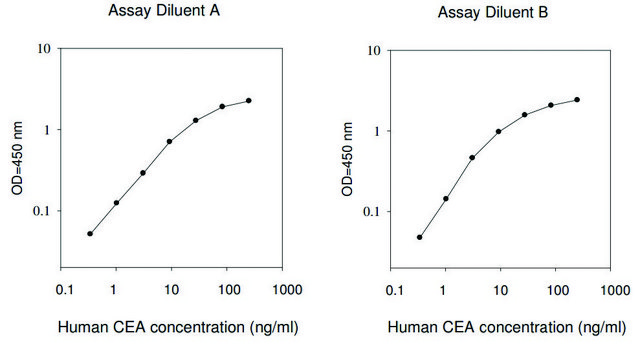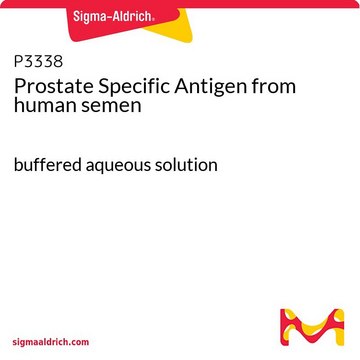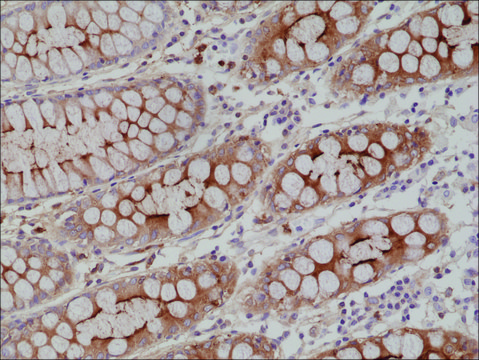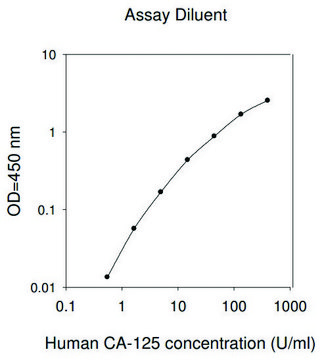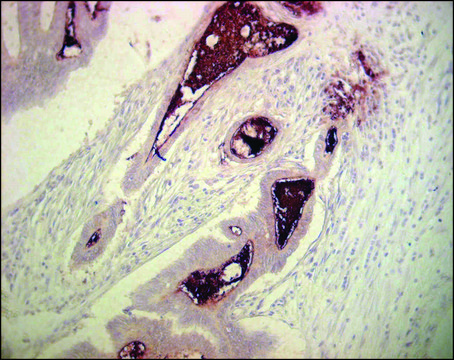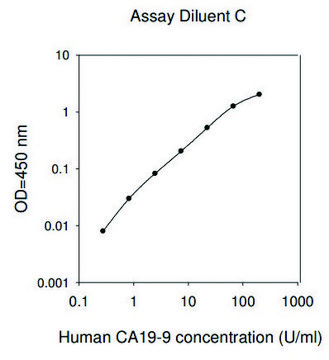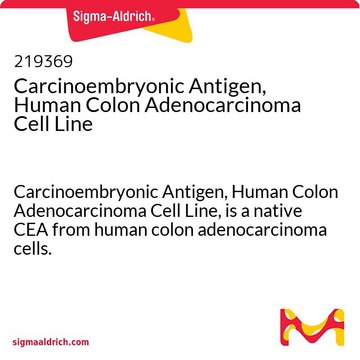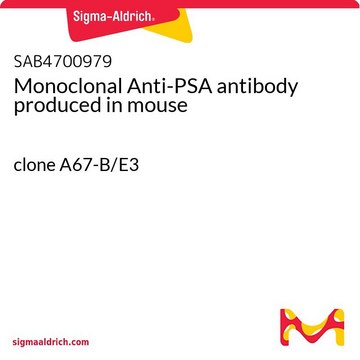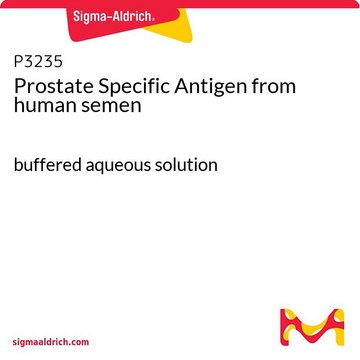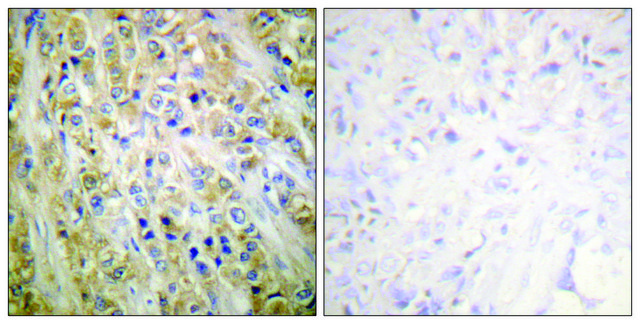推荐产品
质量水平
方案
≥95% (SDS-PAGE)
表单
buffered aqueous solution
UniProt登记号
运输
dry ice
储存温度
−20°C
基因信息
human ... CEACAM5(1048)
一般描述
Carcinoembryonic antigen(CEA) or CEA cell adhesion molecule 5 (CEACAM5), is encoded by the gene mapped to human chromosome 19q13.2. CEACAM5 is a member of the CEACAM family. This glycosylated protein contains a typical N-terminal variable immunoglobulin (Ig)-like domain, constant Ig-like domain, and a hydrophobic transmembrane domain with a glycosylphosphatidylinositol lipid moiety.
应用
Carcinoembryonic Antigen human has been used as a standard in electrochemical immunosensor and developed surface plasmon resonance imaging (SPRi) immunosensor. It has also been used as a tumor-associated antigen (TAA) in enzyme-linked immunosorbent assay
生化/生理作用
Carcinoembryonic antigen cell adhesion molecule 5 (CEACAM5) aids in cell adhesion and migration. In addition, this protein inhibits anoikis and thereby promoting tumorigenesis and metastasis. CEACAM5 is used as a biomarker to detect new cancer and cancer recurrence, particularly those with colorectal cancer. Upregulated expression of the gene enhances non-small-cell lung cancer (NSCLC) cell proliferation and invasion by regulating p38–Smad2/3 signaling. Therefore, CEACAM5 might be considered as an effective therapeutic target for treating NSCLC. Overexpression of the gene has also been observed in various types of cancer including gastrointestinal, pancreatic, and breast cancers.
包装
Package size based on protein content
质量
高度纯化
外形
Solution in 0.15 M phosphate buffered saline, pH 7.4, containing 0.1% sodium azide.
储存分类代码
10 - Combustible liquids
WGK
WGK 1
闪点(°F)
Not applicable
闪点(°C)
Not applicable
法规信息
新产品
历史批次信息供参考:
分析证书(COA)
Lot/Batch Number
Xinwen Zhang et al.
The Journal of international medical research, 48(9), 300060520959478-300060520959478 (2020-10-01)
To detect the expression of CEA-related cell adhesion molecule 5 (CEACAM5) in non-small-cell lung cancer (NSCLC) and explore its function in the progression and development of NSCLC. qRT-PCR and immunohistochemistry were performed to detect CEACAM5 expression in human NSCLC tissues
Elrasheid A H Kheirelseid et al.
Journal of gastrointestinal oncology, 4(2), 144-157 (2013-06-05)
Despite developments in diagnosis and treatment, 20% of colorectal cancer (CRC) patients present with metastatic disease and 30% of cases recur after curative surgery. Furthermore, the molecular factors involved in prognosis and response to therapy in CRC is poorly understood.
Go, V.L.W.
Cancer, 38, 562-562 (1976)
Zeynep Altintas et al.
Talanta, 86, 377-383 (2011-11-09)
An immunoassay in optimised conditions with a highly sensitive surface plasmon resonance (SPR) based biosensor was developed for the detection of the cancer biomarker carcinoembryonic antigen (CEA). Different formats of the immunoassay were initially investigated on the surface of the
Yingji Jin et al.
Oncotarget, 8(62), 105425-105439 (2017-12-30)
Serum autoantibodies against tumor-associated antigens (TAAs) have received much attention as potential biomarkers for early detection of cancers, since they can be detected in the early stages of cancers. Autoantibodies against Cancer Antigen 15-3 (CA15-3), carcinoembryonic antigen (CEA), Cancer Antigen
我们的科学家团队拥有各种研究领域经验,包括生命科学、材料科学、化学合成、色谱、分析及许多其他领域.
联系技术服务部门